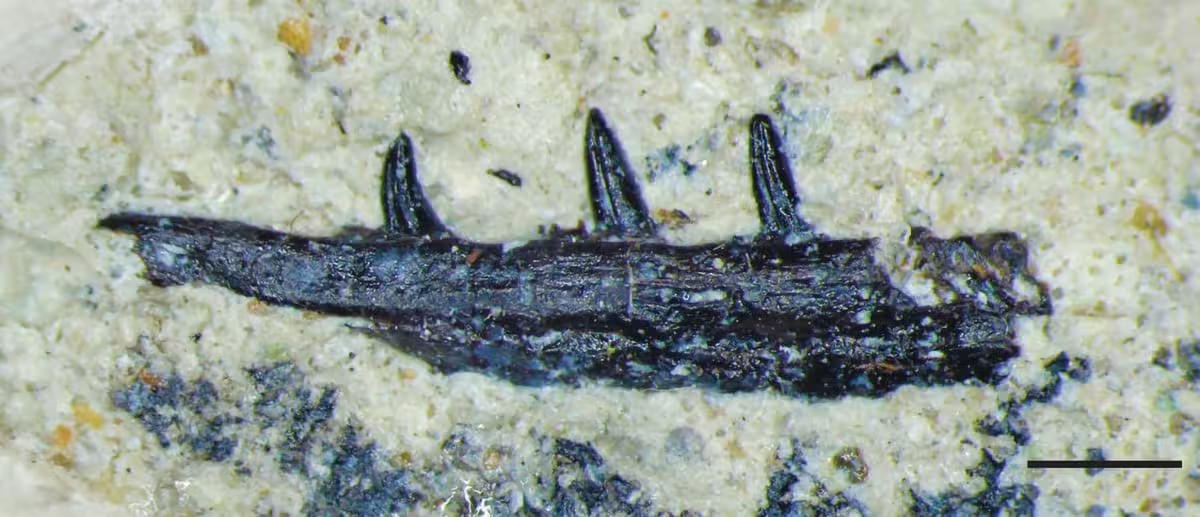The venomous reptile Microzemiotes sonselaensis was discovered in the Late Triassic of Arizona, shedding light on the evolution of reptile venom and ancient ecosystems.
The newly discovered small venomous reptile species Microzemiotes sonselaensis was detected in the Late Triassic Chinle Formation of northeastern Arizona. A study recently published in the journal PeerJ Life & Environment provides new insights into the evolution of toxic feeding strategies in reptiles and advances our understanding of ancient ecosystems in the southwestern United States.
The fossil, consisting of a partial left tusk with distinctive serrated teeth, is believed to represent a new species of reptile that used venom to subdue prey. The discovery marks the third venomous reptile from the Late Triassic and the oldest known reptile with preserved venom-delivering teeth in its jaw. Prior to this, evidence for venom use by Late Triassic reptiles was limited to individual teeth of this genus. uatchitodon .
Features Microzemiotes sonselaensis
A recently described species Microzemiotes sonselaensisEach tooth displays two deep grooves running the entire length of the tooth crown, resembling the venom-delivering grooves of modern venomous beaded lizards and hind-fanged snakes. These grooves probably facilitated poison distribution; This suggests that the species relies on venom in its feeding strategy.
teeth Microzemiotes sonselaensis about ten times smaller than teeth uatchitodon suggests that venom use may have evolved independently in various groups of reptiles with different body sizes. Microzemiotes sonselaensis It was a very small reptile, probably not exceeding 30 cm in length.
The discovery adds to growing evidence of venom use among Mesozoic reptiles, said Helen Birch, lead author of the study and a graduate student at Virginia Tech. “We know very little about the origin of venom systems in reptiles other than living snakes and lizards. Microzemiotes sonselaensis “This is a very exciting addition to the small number of Mesozoic poisoners,” Birch said.
The study also highlights the evolutionary diversity of venom delivery systems in reptiles and draws comparisons with modern venomous species such as helodermatid lizards and some snakes. Although the exact phylogenetic arrangement Microzemiotes sonselaensis Although it remains unclear, representing independent evolution of the venom system, Gila monsters fall outside the class Toxicofera, which includes all groups of living venomous snakes and lizards, including monitor lizards and iguanas.
This discovery not only expands the known diversity of Late Triassic reptiles, but also contributes to a broader understanding of the evolution of venom. The implications go beyond paleontology, offering insights into how ancient ecosystems functioned and how feeding patterns differed among reptiles.
Source: Port Altele
